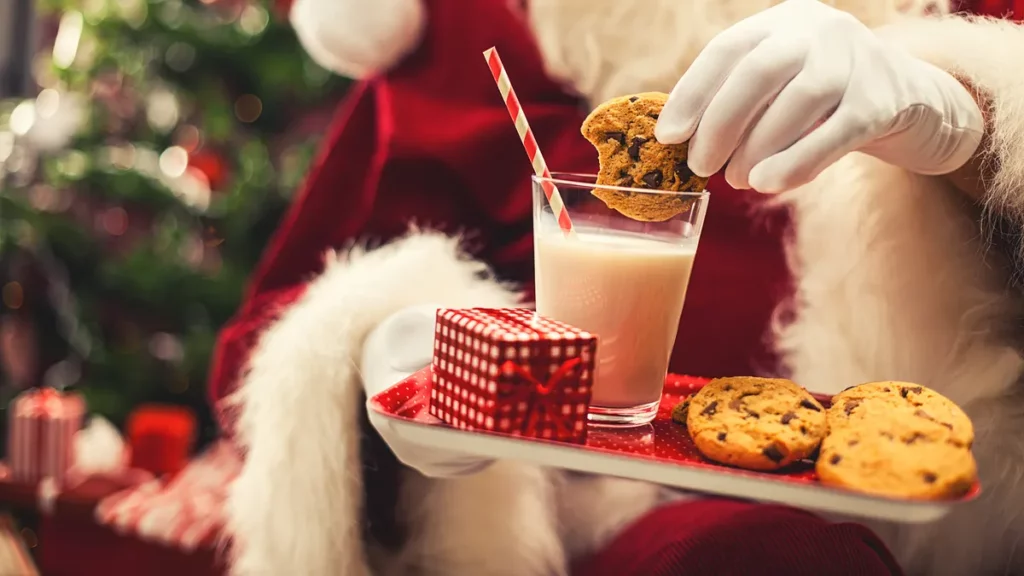Most children in the United States have a long-standing tradition of leaving a plate of cookies and a glass of milk out for Santa Claus on Christmas Eve. But it wasn’t always like this? When did the tradition of leaving milk and cookies for Santa start?
During the Great Depression, leaving cookies and milk for Santa became a common practice in the United States. Parents desired to educate their children that it was wiser to give and be grateful for gifts received during those challenging times.
When Did People Start Offering Milk And Cookies For Santa?
According to one explanation, the cookies-and-milk tradition evolved from an ancient custom in which households would load stockings with delicacies for Santa and hang them by the chimney, his favorite method of entrance, as a welcome present. However, nowadays, such stockings are frequently stuffed with sweets and modest presents for the family members.
Leaving cookies and milk for Santa, along with a few carrots for his reindeer, became a popular American holiday ritual during the Great Depression back in the 1930s. Many parents thought it was a great way to educate their children about how it was vital to contribute to others and to express appreciation for the presents they were fortunate enough to receive on Christmas during that period of significant economic difficulty.
Many kids still leave cookies and milk for Santa, whether out of goodwill or, in less healthy circumstances, as a bribe to acquire additional gifts from the jolly bearded guy in the red suit, some 80 years later. (Source: History)
The Mythological Origin of the Tradition
This festive meal custom has origins that stretch back even further. This dates all the way to Norse mythology. Odin, the most powerful Norse deity, was reported to ride an eight-legged horse named Sleipner, on which he sat astride a raven on each shoulder.
During the Yule season, children would leave food for Sleipner in the hopes that Odin would pass by on his journeys and leave presents. Such a custom is still practiced in countries like Denmark, Belgium, and the Netherlands, where youngsters think that horses, not reindeer, pull Santa’s sleigh.
They leave carrots and hay, even tucked inside shoes, for the fatigued animals on Christmas Eve. Chocolate coins, cocoa, mandarin oranges, and marzipan are some of the Christmas presents they could expect in return. (Source: History)
Still a Christmas Tradition Today in Other Parts of the World
Various countries have created their own versions of the cookie-and-milk tradition over time. Sherry and mince pies are served to British and Australian children, whereas rice porridge is served to Swedish children.
When Santa delivers presents in Ireland, he may expect a pint of Guinness to accompany his cookies. Père Noel is given a glass of wine by the French children, and his donkey, Gui which is French for mistletoe, is given hay, carrots, and other gifts by the youngsters.
In Germany, youngsters omit food entirely and instead leave handwritten messages for the Christkind, a symbolic personification of the Christmas spirit who is in charge of delivering gifts on Christmas Day.
While many German children send their letters to the Christkind before the holiday. There are six official addresses for letters addressed to the Christkind, others put them out on Christmas Eve, embellished with glitter glue or sugar crystals. The letters were gathered on Christmas morning, and gifts were deposited in their place. (Source: History)
